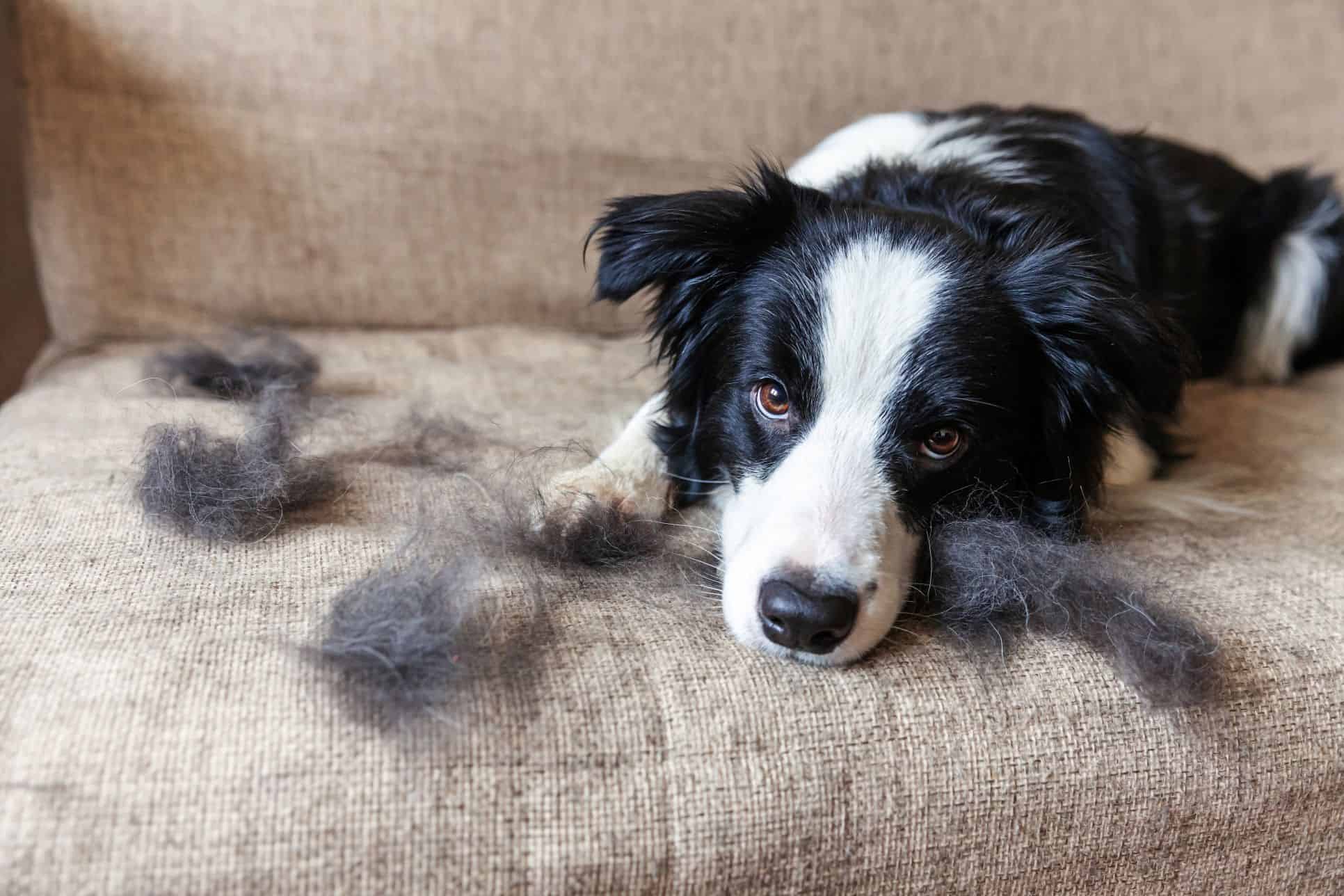The Fall Shed: Managing Your Pet’s Seasonal Hair Loss

With cooler weather on the horizon, logic says our fur babies should be gaining floof—not depositing it all over the house. But if you’ve noticed the fur starts flying when the leaves start falling, there’s a perfectly good explanation!
Our team at Adobe Animal Hospital and Laser Surgery Center is here to help you get to the bottom of this hair-raising mystery as well as provide you with ways to contain your furry family member’s shedding coat.
Why a Fall Shed?
The truth is, our pets are always shedding fur to some degree, but they typically experience two major seasons of shedding: in the spring (which makes purrfect sense) and again in the fall, which might sound counterintuitive.
Interestingly enough, your pet’s coat may be reacting to the amount of daylight in their environment. When the days get longer (in the spring and summer) or shorter (in the fall and winter), it alters hormone levels that impact fur growth.
When the sun starts to set earlier in the fall, it triggers a reaction in your cat’s or dog’s hair growth cycle. The old fur will be shed to make room for a new, thicker undercoat for the cooler months.
Indoor-only cats and small dogs that spend most of their time inside may experience a steadier, year-round shed.
Tips for Coping with Your Pet’s Changing Coat
In addition to diligent vacuuming of the floors and furniture, plus persistent use of sticky lint rollers, there are practical ways to reduce the amount of flying fur in your home:
- Get serious about grooming. You may very well brush or comb your pet’s fur on a regular basis, but during a seasonal shed, many pets need to be groomed daily. Grab a deshedding tool, like the Furminator or ShedMonster, and prepare to be awestruck by the amount of fur and undercoat you collect!
- Frequent bathing can help loosen and remove fur, and you can save yourself the mess by pampering your pet with trips to a professional groomer. Some groomers also offer deshedding treatments that may be particularly helpful for long-haired or double-coated breeds.
- Focus on nutrition. Make sure your pet is eating a high-quality diet and that a protein source is listed as the first ingredient. Nutritional supplements like fish oil and Omega-3s may also help keep your pet’s coat and skin healthier.
Schedule a Vet Check
Excess hair loss isn’t always a seasonal phenomenon. Some medical conditions can prompt your pet’s loss of fur, such as allergies, mites, ringworm, skin infections, fleas, and Cushing’s disease. Be on the lookout for symptoms that could point to a medical problem:
- Red, irritated skin in the area of the hair loss
- Patches of bare skin showing through
- Flaky or crusty skin
- Unusual lumps or bumps
We’re Here to Help
Our compassionate team is always happy to demonstrate proper grooming techniques and answer questions you have about maintaining your pet’s crowning glory. Please contact us to schedule your pet’s next visit.
